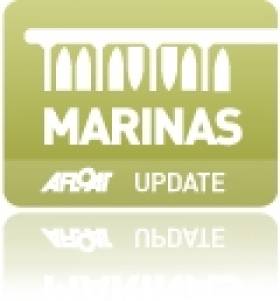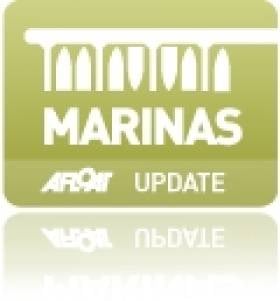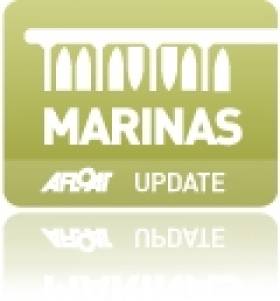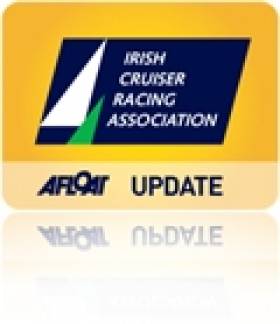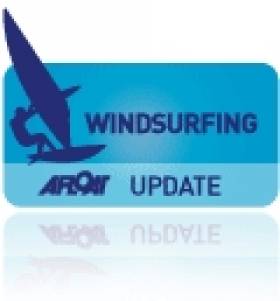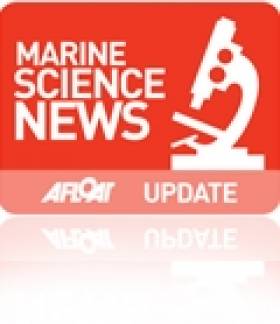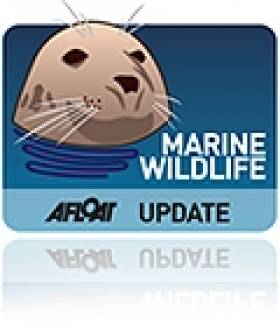Displaying items by tag: Kerry
Portmagee Harbour Pontoon. Boat Berths in Kerry
After first hatching its harbour plan over five years ago, National Tourism Award winning village Portmagee in County Kerry now looks certain to see a new pontoon finally installed at Portmagee pier in 2013. It will be a further boost for a Kerry already popular with visiting yachts and boats.
The idea is to link the network of facilities that terminate in West Cork with new facilities in County Kerry and Portmagee will be an important link in this process.
The plans are that both local Skellig Rock tourism boat operators and up to 20 visiting yachts at any one time can use the new village pontoon once it is installed.
The facility is being developed through a local community initiative with funding from Kerry County Council and Failte Ireland.
Dromquinna Manor Pontoons. Berths for Boats in Kerry
Boating facilities at the Dromquinna Manor resort in Kerry include pontoon berths offering the boating enthusiast a wonderful base to enjoy the south-west coast. The current facility comprises a long jetty in the Kenmare river.
Kerry Calls Emergency Workers For 'Heroes Week' This June
#Rescue - Emergency workers with Irish heritage from all over the world are being invited to celebrate Heroes Week in Tralee this June.
As part of The Gathering 2013 initiative, the chiefs of Co Kerry's emergency services will welcome first responders with Irish heritage - or an affinity for Ireland - for a week-long reunion among colleagues in Ireland.
That means any members of the police, fire service, coastguard, ambulance service, the Red Cross and the RNLI the world over!
Visitors will be declared 'guests of honour' in Tralee for the week, and among the various events planned between 12-17 June, they will have a chance to trace their Irish roots, and sightsee around one of Ireland's most picturesque spots.
And what's more, the not-for-profit event aims to raise funds for vital local rescue and lifesaving services.
As reported on Irish Central, Mayor of Kerry Terry O'Brien said: “We salute the men and women who go to work each day with only one purpose in mind – to protect and save lives. Many of them have Irish roots and we want to invite them home.
"Kerry has a strong tradition of volunteerism and a collective pride-of-place that will see us roll-out the red carpet to welcome our Heroes home to the Kingdom County. I hope you can join us and we assure you of a memorable visit with us and a warm Irish welcome.”
Full details of the event, including booking information, are available on the Heroes Week website HERE.
Valentia Harbour is on the south side of the entrance to Dingle Bay, in a sheltered area between the Valentia Island and the mainland. Knightstown is a fishing port and is the Island's only settlement. It provides visiting yachts with a sheltered anchorage and moorings. There is the outline of a marina (the floating breakwaters) there and they are sometimes used for berthing.
#icra – A fleet of 40 boats with some high calibre entries are entered so far for the ICRA National Championships at Tralee Bay Sailing Club in June.
This year organisers says there is equal focus on IRC and ECHO handicaps in the National Championships with equal trophies prizes and recognition together with the ICRA Corinthian Cups for the Non-Spinnaker Divisions means that all Club sailors are catered for say organisers.
Division 2 is already shaping up to be a great fleet with the Corby 25 Tribal (ex Yanks and Franks), Liam Burke from Galway Bay entered and Dave Cullen's Half-Tonner King One from Howth Yacht Club. Nigel Biggs' Half-Tonner Checkmate XV from Dun Laoghaire's Royal St George is also in. There are also expected entries from skippers Frank Desmond, Peter Deasy and Mark Ivor's Cork Week winning Bad Company from the Royal Cork and Martin Reilly's Half-Tonner Harmony from Sligo Yacht Club.
Division 3 already has two hot quarter tonners Diarmuid Foley's Anchor Challenge from the Royal Cork and Lostys Illes Pitituses from Cobh Sailing Club as well as the defending champion Tiger (Neil Kenefick).
Division 1 is also building with likes of Raptor Denis Hewitt and partners and Joker 2 John Maybury both from the Royal Irish Yacht Club and Exhale Derry Good from Royal Cork Yacht Club leading the charge.
Division 0 sees ICRA Commodore Norbert Reilly's Crazy Horse Howth Yacht Club lining up against Anthony O' Leary's Royal Cork Antix who will be using the Dun Laoghaire to Dingle race as a feeder. Gloves Off skippered by Kieran Twomey and Conor Phelan's Jump will also be likely to travel from Royal Cork.
The ICRA Corinthian Cup will be sailed for non spinnaker classes at the same time and is expected to draw significant interest.
As before in Tralee, WIORA West Coast Championships is 'intertwined' with the ICRA's and starts a day earlier on 12th finishing on the 14 th as an extra bonus for all those who travel.
The facilities of Fenit Harbour including marina berths for the duration of the event together with inexpensive lift in and out are a bonus for ICRA. TBSC promise a carnival atmosphere in the club and throughout the village with pubs and restaurants doing their bit to make sailors welcome.
Entry discount applies before 27th April 2013 so don't delay - get your entry in now at www.traleesailingclub.com
Accidental Pollution Leads To Fish Kill In Co Kerry
#FishKill - Accidental pollution from a farm in Co Kerry has resulted in a fish kill on a tributary of the Ballyline River.
Inland Fisheries Ireland were contacted by Kerry County Council on Saturday 16 March after being altered by a farmer to a slurry spill on his property in the Kilgarvan area of Ballylongford.
Upon arriving at the farm, IFI officers found one side of the slurry pit wall had collapsed, resulting in a large slurry spill. Two cattle were also injured in the incident and had to be put down.
The slurry went into a watercourse that eventually flows into the Shannon Estuary at Ballylongford Bay.
The farmer had carried out emergency measures on site attempting to contain the slurry and also trying to minimise the impact to fish and wildlife downstream.
Fisheries officers carried out a visual inspection downstream but as the slurry was still passing there was strong discolouration and so it was impossible to see any dead fish. Samples were taken and sent for analysis immediately.
The situation was monitored over the weekend, and a full walkover of the stream was carried out as the water cleared on Tuesday 19 March.
IFI can confirm that a fish kill took place as a result of the pollution incident, and that 150 brown trout, hundreds of stickleback, one eel and one flounder were recovered. The section of river downstream from the farm to Gortanacooka Bridge was the most heavily impacted.
Currently there is a buildup of organic sediment in the river from the farm to the first bridge in Graffa Bog, which IFI says will not disperse until there is a flood in the river.
The farm was also inspected on the evening of 19 March and the water within the watercourse was clear. The investigation continues.
Storm Chase Mission 2 Abandoned At Last Minute
#Windsurfing - Mission 2 of the Red Bull Storm Chase to Galicia has been abandoned at the last minute due to an unstable weather forecast for the coast of northern Spain.
It's a big blow to the six waveriders who qualified for the second-stage of the global windsurfing challenge after three rounds of exciting competition in Brandon Bay less than two months ago.
The storm-force winds that swept the Kerry coast at the end of January provided the perfect conditions to test the mettle of the brave sailboarders who took to the water at the 'Dumps' ad 'Hell's Gate'.
Of the ten-strong field, six survived to advance to the second round - Marcilio Browne, Dany Bruch, Victor Fernandez, Robby Swift, Julien Taboulet and Thomas Traversa.
And Red Bull have posted a video compilation of highlights of all the action from Mission 1 in Kerry, which you can see below:
#MarineScience - An American university is teaming up with marine experts in Dingle to offer advanced marine biology classes.
As the Fairfield Sun reports, the biology department at Sacred Heart University in Connecticut is collaborating with scientists and staff at the Dingle Oceanworld Aquarium to offer the advanced classes to undergraduate and postgraduate students alike, beginning this May.
It's expected that the Coastal Study Centre programme will eventually provide both semester-long and short courses to take advantage of the aquarium's advanced research facilities, and will also accommodate students doing relevant thesis field work.
“Very few primarily undergraduate institutions have as strong a coastal focus as Sacred Heart does, which is only enhanced by our proximity to Long Island Sound,” said John Rapaglia, assistant professor of biology at Sacred Heart.
“Dingle Harbour’s semi-rural to rural location creates a nice juxtaposition to the highly urbanised Long Island Sound.”
Sacred Heart already has an established campus in the Kerry Gaeltacht town where students can take classes on Irish and Celtic history and heritage among other subjects.
The Fairfield Sun has more on the story HERE.
Sailing Colleges Converge on Kerry Waters
#teamracing – The chances in Ireland of snowfall on St Patrick's Day are statistically better than the chances of the white stuff coming down on Christmas Day. The reason we haven't really got our heads round this notion is that in mid-March, it just disappears like....well, like snow off a ditch.
But spare a thought for the suffering citizens of southeast England. They effectively enjoy a Continental climate, which means their average chances of snowfall at Easter are higher than at Christmas, even allowing for Easters in late April.
Not so in Ireland. But nevertheless if you want to get the best of what's available in sailing over the Patrick's Day holiday, and reckon that the sea at its coldest is quite enough to be going along without rain falling as snow showers too, then head southwest pronto.
Twenty-eight university sailing teams have done that very thing, heading for Kerry and converging on Fenit in Tralee Bay where University of Limerick are the organisers of the annual Irish Intervarsities, team racing in Fireflies, with Tralee Sailing Club providing the facilities for the opening event of what promises to be a very busy season, as they have both the WIORA and ICRA championships down there in June.
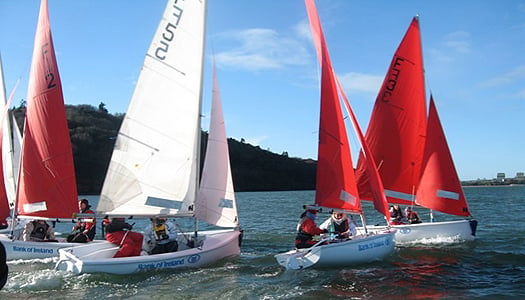
It may be 68 years since Uffa Fox designed the Firefly 12ft dinghy for mass production in hot-moulded multi-skin timber - "cooked life a waffle" - but it is still a favourite for the special demands of team racing, and more durable these days with GRP construction
The TSC season explodes into life this weekend, as the three-day Intervarsities zapped into action promptly at 1000hrs yesterday, with 72 races scheduled each day. Then today both the Tralee Marathon and Half Marathon come trotting through Fenit. And tonight, the club throws its traditional Launch Party, one of the more boisterous events of the year. As Commodore Pat Daly commented earlier this week, after a winter of slumber the members don't know what's going to hit them, but they'll enjoy it anyway.
For sure, they have the place to do it. The rest of Ireland tends to think of northwest Kerry as a wild and woolly place. But in fact Fenit is a snug little spot, with a sheltered south-facing coastline between it and Spa in towards Tralee town, while sailing in the impossibly beautiful bay has been transformed by the top class marina out at the harbour on Great Samphire Island. Yet it's less than an hour's sail across the bay to the Maharees, which is pure Atlantic Ireland, a place apart where they create the finest racing naomhogs on the west coast.
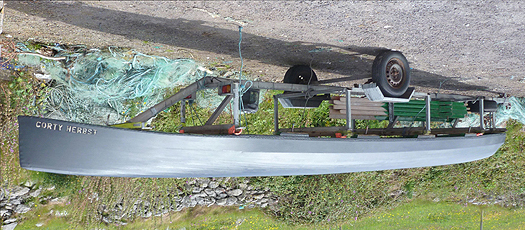
Do not adjust your set....we have inverted this photo, taken July 2012, in order to better show the highly-refined racing naomhog Corty Herbst at the Maharees in Kerry. Corty Herbst (1924-2000) was an American who settled in the Maharees with his wife Joan in 1969, and became much involved with the local racing currachs, playing a key role for many years in organising the Maharees Regatta. Photo: W M Nixon
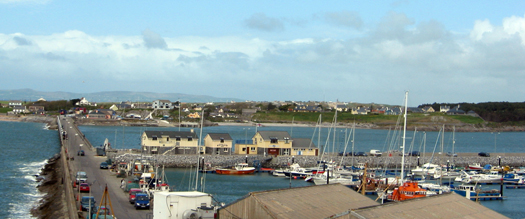
Fenit's 130-berth marina is a friendly place, and the harbour is a fine example of practical co-existence between fishing boats, recreational sailors, and commercial shipping. Photo: W M Nixon
The harbour on Samphire Island is reached along a 0.75 km causeway and bridge which is always well lined with sea anglers, who live in a world of their own. If you arrive in aboard a cruising boat, you'll find it takes exactly seven minutes to walk that bridgeway to the nearest pub, and another couple of minutes to get up to the club. But as the Intervarsities are dinghy focused, everything will rotate around the fine clubhouse in its prominent position above its own launching slip and an excellent sailing area which is ideal for an intense event like this, as it offers several options to cope with changing wind directions.
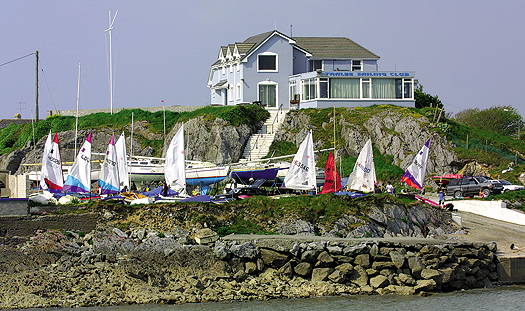
Tralee SC is at the heart of a boat-orientated complex which includes a busy sailing school
Having a major event so early in the season is always a bit of a gamble, but the pattern of the university year dictates the timing. This weekend's series is emphatically the Team Racing championship, which automatically secures the winners a place in the massive British University Team Opens at the end of April. But during April, the Irish colleges will also be in pursuit of a place in the Student Yachting Worlds in France at the end of October, very high on the agenda as UCD won it in 2012, so they already have a place as of right.
Thus there'll be an extra place up for grabs by whoever can top the Irish Worlds trials in April, which will be raced in the SailFleet J/80s. They're based in Howth this year, and the college trials will have racing on April 6th, 13th and 20th. It's all of more than academic interest, as the Student Yachting Worlds will also be raced in J/80s, which provides the prospect of the good old one two for Irish university teams at world level. Dream on.....
As for this weekend, it's the gallant Fireflies which are the workhorses for the three-boat teams. The logistics are mind-boggling, and UL's Robert O'Leary – best known in recent seasons as the helm out of Crosshaven on the family's cruiserfied 1720 Antix Beg – has stood back from being on the team in order to concentrate on the Sisyphean task of keeping things on schedule, or maybe even a bit ahead of the sched, as the winds might be pushing towards gale force northerlies later tomorrow afternoon.
With Irish women being way ahead of their male counterparts these days in success in international sports such as rugby, boxing and sailing, it's no surprise to find several of the leading teams in the Intervarsities on Tralee Bay have women captains, with University of Limerick – very much the pace-setters in college team racing build-ups earlier this year – headed by Lauren Joslin, while the international stars of UCD are captained by Zoe Flood.
Yesterday saw the first day of racing blessed with much better weather than was being been anticipated at mid-week, with Tralee Bay enjoying its own favourable micro-climate while massive clouds passed to north and south in a 12 to 16 knot westerly which was enlivened by only a couple of rainsqualls on the bay. That said, a "small hailstorm" was a reminder that winter has barely released its grip, but there was plenty of sunshine and spring was in the air.
University of Limerick lived up to the promise of earlier events this year with wins in all their races, while UCD were next with five wins out of six, followed by TCD. Today should see the programme moving along with northerlies and clearing skies, and there's an improving chance that the northerly gales being mentioned for tomorrow will be far enough west to allow the programme's smooth conclusion.
GATHERING THE GAFFERS
Trying to assemble a fleet of boats and then get them moving in any sort of co-ordinated way is about as easy as herding cats at a crossroads. It's a good explanation for the appeal of racing – put up a prize and start firing the guns in the starting sequence, and there's just a chance some sort of order might prevail.
Another technique is finding some anniversary of recognisable significance, and building an event around it. The word is that the Irish Cruising Club are going to have a Octogintaquinquessimal Cruise-in-Company in southwest Ireland next year to celebrate the 85th Anniversary of the founding of the club in Glengarriff on July 14th 1929. Anyone suggesting that if they could just hang on for another fifteen years, then they could have a real mega-celebration for the Centenary, is sharply reminded that the club has a very significant membership cohort of extremely senior seniors in a hurry, and they want to Do It Now.
Meanwhile, it seems the notion of a Golden Jubilee cruise this summer for the Old Gaffers Association in the form of a rolling circuit of Britain with two stopovers in Ireland, and boats joining and leaving as they please, is proving popular. Sign-ups for the Dublin visit from May 31st to June 4th have already gone through the fifty mark, with the style being set by some fine big cutters such as Brandaen from the Netherlands, Annabel J from the Solent, and Adrian 'Stu' Spence's 1875-vintage Pilot Cutter Madcap from Strangford Lough.

The impressive Dutch cutter Brandaen has signed up for the Old Gaffers Golden Jubilee Cruise-in-Company, which comes to Dublin Bay from 31st May to 4th June.
It's all a long way from the first assembly in Ireland of boats intent on celebrating the special joys of gaff rig, which attracted precisely three craft to Dunmore East in 1955. For a long time there'd been amiable arguments as to which was the faster boat between the Cork Harbour One Design of 1895, and the similarly-sized Dublin Bay 21 of 1902. With Dinghy Week 1955 being staged in hospitable Dunmore East, a midway port of sorts, two Dublin Bay 21s and two Cork Harbour ODs set out from their respective harbours to meet for the first time ever in Dunmore for a deciding contest which would have the benefit of being witnessed by racing experts.
The weather decided otherwise. Not through gales, but because of an enormous flat calm. In Cork, the two CHODs were towed out of the mirror-like harbour mouth, but the tide brought them back in again, so one of them – Cygnet - moored to a navigation buoy. When the tide turned again to offer the chance of a second attempt at departure, in the hassle of releasing themselves a crewman was left behind on the buoy (I'm not making this up), and the sluicing ebb meant they couldn't return to collect him.
Fortunately George Radley's Querida was further back, and she was able to collect the stranded crewman in passing, so to speak. They made it to Ballycotton that night, and then to Dunmore East the following day. But only one of the Dublin Bay 21s made it over the longer distance from Dublin Bay. This was Naneen owned by Michael 'Styx' O'Herlihy, who the following year sailed to America on the Kearney 6-ton yawl Evora, and made his fortune in the US as producer of the successful TV series Hawaii Five-O. His crew was the youthful Cass Smullen, and it took the pair of them fifty hours to get to Dunmore East, which made Dyko Morris, who retired from the voyage at an early stage with his DB21 Geraldine, even more convinced he'd done the right thing.
With an element of exhaustion and over-exuberant celebration at getting to Dunmore East at all, the actual races don't seem to have been totally conclusive, in fact there were only a couple of contests with one day lost through gales. Honours were fairly even – the Dublin Bay 21 had the edge in lighter breezes when her topsail could be set, but when it piped up the Cork Harbour OD, with her high-peaked gaff main and never carrying a topsail, seemed to have the best of it.
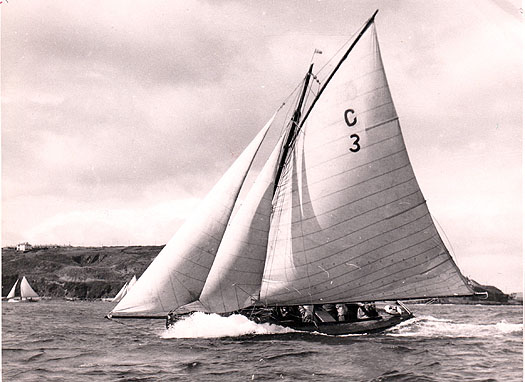
Cork Harbour OD in classic style, with high-peaked gaff mainsail, but no tops'l, romping seaward from Cork Harbour. The restored boats will be having special races at Cobh Traditional Sail Regatta from June 28th to 30th. Photo: Tom Barker
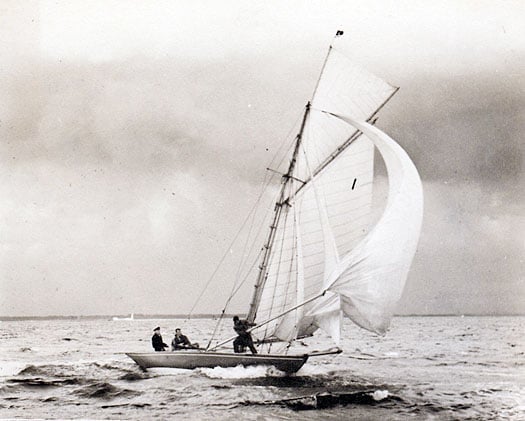
When the Dublin Bay 21 could carry her topsail, she seemed to have the edge on the Cork Harbour OD, but the Cork boat seemed faster in strong winds.
Years later, Styx O'Herlihy and George The Rad used to wax nostalgic about this unique event, for in hindsight it was a sort of last hurrah. In 1963 the Dublin Bay 21s decided to change to Bermudan rig, and at much the same time the Cork Harbour One Designs were being turned into Bermuda rigged cruisers, for which they did very well. They'd heftier hulls than the Dublin Bay 21s, and thus could provide more accommodation, and at a time before bare hulls in fibreglass for home completion as cruisers had become available, it was a useful option for an economy cruiser.
The story takes an odd turn, for although the Dublin Bay 21s stayed together as a racing class, they ceased to function after the damage in Dun Laoghaire harbour by the remnants of Hurricane Charlie in 1986. But the Cork Harbour One Designs found new life as Bermuda-rigged cruisers, and thus survived in order for several of them to be converted back to their original gaff rigged racing setup as the interest in classic yachts grew. Particularly notable was Jap, which was found in a hidden creek of Falmouth Harbour and brought magnificently back to life for Clayton Love Jnr by Fairlie Classics. He notched many classic regatta successes with her before selling her on to David Sheriff, who last year skippered Jap to top boat overall in the Classics Regatta at Cowes in July.

With their conversion to Bermuda-rigged cruisers as seen here in 1981, the Cork Harbour One Designs survived to avail of the classics revival, which has seen several of them restored to original form. Photo: W M Nixon
This year there'll be a chance to see the restored local fleet of Cork Harbour One Designs in action at the Cobh Traditional Sail Regatta from June 28th to 30th. Whether or not we'll see any of them making the scene for the first time ever in Dublin Bay with the Old Gaffer events four weeks earlier is probably mostly a matter of logistics. But if they're heading for the east coast, they can rest assured there's no requirement to leave a crewman behind on a navigational buoy on the way.
Comment on this story?
We'd like to hear from you on any aspect of this blog! Leave a message in the box below or email William Nixon on [email protected]
Recent Dolphin, Whale Strandings 'Very Unusual' Says IWDG
#MarineWildlife - The Irish Whale and Dolphin Group (IWDG) has described as "very unusual" a mass stranding of common dolphins on Achill Island last week - which was followed this week by the remains of cetaceans washed up in Kerry.
At least eight common dolphins were found dead on Keel Beach, Keem Beach and Dookinella on the Co Mayo island at the end of January.
And The Irish Times reports that two pilot whales and an "otherwise healthy" dolphin were found washed up at Cuas Croom near Cahirciveen in the last few days.
Commenting on the former incident, IWDG stranding officer Mick O'Connell said: "While there are occasionally live strandings involving groups of dolphins, it is very unusual in this country to see this number of dead dolphins washed ashore over a 10km area."
Strandings of deceased dolphins have also been reported in Donegal, and the IWDG's Simon Berrow suggests that the recent severe weather experienced around Ireland's coast may be a factor.



























